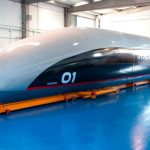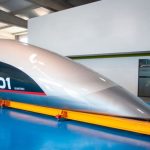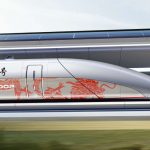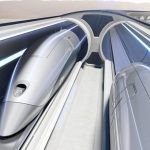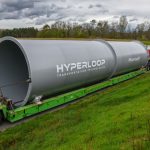
A new, full-size Hyperloop capsule designed to carry passengers at 1,000 kilometers per hour (620 mph) was unveiled Tuesday, offering a glimpse at what could be the future of travel.
Hyperloop is the megafast, cutting edge transport technology first envisaged by controversial business magnate Elon Musk. It’s designed to transport people through low-pressure steel tubes at speeds to match a typical passenger aircraft.
Several companies are now competing to be the first to make the Hyperloop concept a reality. Hyperloop Transportation Technologies, a US start-up with no connections to Musk, hopes its new full-size prototype capsule puts it ahead in the game.
The sleek capsule was unveiled Puerto de Santa Maria, Spain, near where it was constructed at the aerospace facilities of Airtificial, a partner of HyperloopTT.
Billed as “an airplane without wings,” the aim of Hyperloop is to permanently disrupt how we travel long distances. Several Hyperloop routes are currently in development in countries such as China, UAE, Spain and France.
This new Hyperloop capsule, named “Quintero One,” is made out of dual-layer smart composite material designed to be extra resilient.
he capsule’s aerodynamic exterior was created by design consultancy PriestmanGoode. The interior has yet to be completed.
At a length of 32 meters (105 feet), the capsule would form part of a longer train that could feasibly speed cross country in record time. A journey from Los Angeles to Las Vegas could take just 20 minutes.
Once the final touches are completed, the capsule will be tested on a Hyperloop test track.
So how close is this to becoming a viable transportation option? According to the HyperloopTT team, it’s imminent, even though there are currently only test tracks in development.
“In 2019, this capsule will be fully optimized and ready for passengers,” confirmed Bibop Gresta, chairman and co-founder of HyperloopTT, in a statement.
Another start-up, Virgin Hyperloop One built a hyperloop passenger pod to scale in 2017 — dubbed the XP-1 — that’s already been tested on its track in the Nevada desert and reached speeds of 387 kilometers per hour.
Source: CNN
Discover more from TechBooky
Subscribe to get the latest posts sent to your email.
